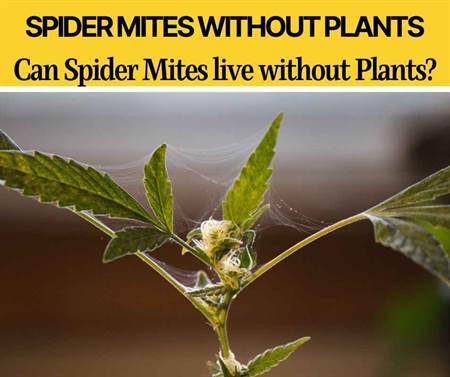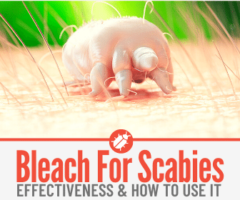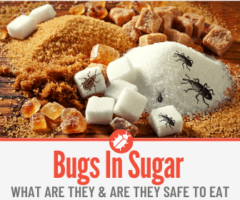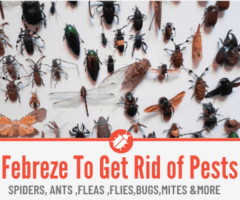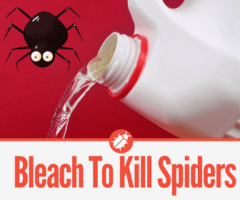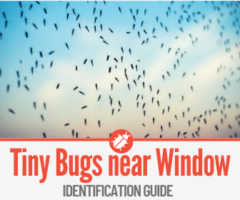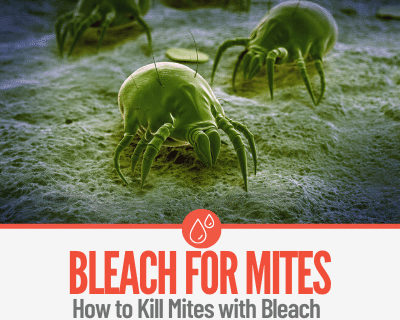 There are several kinds of mites—dust mites, animal mites, spider mites, mold mites—and they’re all a pest that you don’t want in your home (or on your body!)
There are several kinds of mites—dust mites, animal mites, spider mites, mold mites—and they’re all a pest that you don’t want in your home (or on your body!)
If you’re looking for a way to exterminate them with what you have on hand, you might turn to a bottle of bleach.
Bleach can absolutely be used to kill mites themselves. However bleach it’s not the most effective way to get rid of mite infestation as it won’t reliably kill mite eggs/larva.
It’s also important to note that if using bleach to kill mites, great caution must be taken due to how dangerous bleach can be.
In the rest of this article, we’ll get into how bleach affects mites and how to attempt to kill different kinds of mites with Bleach.
Here’s how Bleach Kills Mites
Many species of mites breathe through their skin, making surface exposure to bleach dangerous or fatal for them. This same method does not reliably kill their eggs or larva, though.
The length of time it takes for bleach to kill mites varies based on the method you use, when directly exposed to high concentrations of bleach, bleach can kill mites within minutes.
Using bleach with proper precautions is relatively easy and cheap, and as most people have it in their homes already it is relatively accessible, but it is not the fastest way to get rid of mite infestation in your home.
How to Use Bleach to Kill Mites
As previously mentioned, there are several different kinds of mites. They have different habitats and different needs, which means that different methods of extermination will be most effective.
Dust Mites
Dust mites can live in bedding, carpeting, upholstered furniture, curtains, and other such places in your home. They’re not parasites—they won’t bite you, they just eat the dead human skin cells in dust—but they are pests and they contribute strongly to common allergies.
There is conflicting information about whether or not bleach effectively kills dust mites.
For example, Clorox’s website says that their product “is an EPA-registered sanitizer and disinfectant that kills various bacteria, viruses and fungi, but it is not registered to kill dust mites.”
Washing infested items with bleach can have a good effect, but it doesn’t guarantee the complete death of all mites, and bleach will likely not kill their larvae.
Spider Mites
Spider mites will be found more often ruining your garden than living in your house, but if you have indoor plants you may find them there as well. They usually live on the underside of leaves, and can damage your plants.
This method works best for controlling a spider mite infestation in your indoor planting areas, such as potted plants in your home, a greenhouse, or a grow room.
Mix a tablespoon of bleach with a gallon of pH balanced water heated to 95 degrees Fahrenheit, pour into a mister or sprayer, and spray and clean all the surfaces in the affected area.
You may be able to apply the bleach and water solution directly to your plants, but take care that you don’t accidentally harm your plant in your quest to save it from spider mites, and rinse it off carefully and thoroughly.
Mold Mites
Mold mites are just what they sound like, mites that live on and eat mold. Generally they’re harmless, but you don’t want mold or an infestation in your home.
Fortunately, getting rid of the mold will get rid of your mold mite problem, and you can use bleach for this if you take proper care and follow proper instructions. (Don’t use this method on mold growing on porous surfaces—drywall, wood, etc—because it can soak in and increase the moisture and actually make your mold problem worse.)
- Mix a cup of bleach in a gallon of water (remember, only water, never mix bleach with other chemicals or cleaners)
- Spray bleach solution onto the surface in question
- Wait a few minutes, and wipe clean with warm water.
- Let it dry thoroughly and repeat as needed.
Chicken Mites
Chicken mites are also sometimes called bird mites, because they can actually live on the skin of many birds even if they primarily live on chickens. These pests can cause mild problems like discomfort for your birds, but they can also lead to feather loss or in extreme cases, death.
It’s not advisable to use bleach directly on your chicken or other bird to deal with mites.
However, if you are safe and careful, you can use it in their environment, such as a birdcage or more specifically a chicken coop to prevent the risk of re-infestation after exterminating the mites on their body with methods safer for animals.
Using bleach for Mites in a Chicken Coop
- Remove all the old bedding and any food or water equipment.
- Throw the bedding away and clean the food and water equipment and the coop with warm, soapy water.
- Rinse thoroughly and dry completely.
- Sanitize the coop (not the food and water equipment) with a solution with a 1:32 ratio of bleach to water.
- Rinse with warm water.
- Let dry completely & Put in new bedding.
Russet Mites
Like spider mites, russet mites live on and damage plants. Unlike spider mites, they don’t make any kind of webbing that can help you detect them earlier. By the time you know you have a russet mite problem, they’re usually fairly widespread.
Though russet mites are distinct from spider mites, the method for using bleach on a russet mite infestation is the same as for spider mites.
Mix a tablespoon of bleach with a gallon of pH balanced water heated to 95 degrees Fahrenheit, pour into a mister or sprayer, and spray and clean all the surfaces in the affected area.
You may be able to apply the bleach and water solution directly to your plants, but take care that you don’t accidentally harm your plant, and rinse it off carefully and thoroughly.
Turkey Mites
A “turkey mite” is not actually a mite at all, but a colloquial name for the young larval and nymph stages of the lone star tick. (Mites and ticks are both arachnids, but they’re not the same species at all.) “Turkey mites” are hitchhiking pests, which means they “ride” into your home on you, your clothing, or your pet.
If you find turkey mites on your clothing, wash in the hottest water you can, and adding bleach according to safe washing instructions may help with killing the mites on your clothing in the wash.
If you find them on yourself or on older children, a bleach bath may be helpful to deal with mites.
Young children prone to putting bath water in their mouths shouldn’t be given a bleach bath, if your very young child has turkey mites contact a pediatrician.
If you find turkey mites on your pet, contact a vet to find the best way to remove them.
Clover Mites
Clover mites are another species that infests plants. They also infest houses, and although they cannot harm humans or cause structural damage, they are a nuisance.
There’s not much information about using bleach to kill clover mites.
Since these mites, like the spider mite and the russet mite, are plant-harming pests, you may find success using the same method for spider or russet mites.
Snake Mites
Snake mites are mites that can harm many reptiles but primarily infest snakes.
If a snake mite infestation is left unchecked over time these parasites can weaken your snake, leaving it open for secondary infections and general poor health, and in extreme cases a snake mite infestation can lead to the death of your snake.
Do not apply bleach or bleach solutions directly to your snake, see a veterinarian about the infestation on your snake.
While your snake is being treated for its infestation, however, you can use bleach to disinfect its environment.
Remove everything from the snake’s tank. Hiding boxes, substrate, and anything else that is difficult to clean should be thrown away.
Then use a solution of two tablespoons of bleach to one quart of water heated to 122 degrees Fahrenheit and wash the entire inside of the enclosure.
Rinse and dry thoroughly.
You’ll want to put paper products on the bottom of your snake’s tank until you find no more mites in the tank, and change the paper often.
Repeat the cleaning mentioned above regularly until there is no more infestation.
Rodent Mites
Rodent mites are—you guessed it—mites that live primarily on rodents. Unlike some of the other mites on this list, rodent mites can and will bite humans.
If your pet rodent has mites, take it to the vet to get the infestation on the actual rodent taken care of.
- Throw away all of its old bedding and any cage accoutrements that cannot be easily cleaned.
- Cloth items such as hammocks can be washed in hot water with bleach added according to instructions.
- The cage itself can be washed with a solution of one tablespoon of bleach to a gallon of hot water, then rinse and dry thoroughly before adding new bedding.
- Check frequently for recurrence of the mite infestation and repeat treatment as needed.
If the rodent mites in your home are from unwanted visitors, an infestation on top of an infestation, you may need to call pest control to deal with the primary problem, the rodents invading your home.
After that, use a mild bleach solution to wash any areas where you’ve noticed the rodents or their mites, and any bedding or blankets or any such items that may be infested should be washed with hot water and bleach according to washing instructions.
This may be another instance where a bleach bath for yourself and older children and a pediatrician call for younger children or vet visit for pets may be in order.
Bleach Bath for Mites—How Effective Is It?
Bleach baths are sometimes used as a home remedy for treating infestation by the human itch mite, or scabies.
To make a bleach bath you run a full bath, mix in a quarter cup of bleach (and nothing else, never mix bleach with any other substance), soak for at least 10-15minutes, then wash the bleach water from your body with warm water, and repeat daily until the infestation is gone.
Bleach baths are not for pets or for very young children who might put bath water in their mouths.
The amount of bleach baths you may have to take to fix your scabies varies, making its effectiveness difficult to judge, but as long as the method is used properly and safely, it should help and should not cause any other problems.
Is It Worth It To Kill Mites With Bleach?
In the long run, bleach is not the best way to try to handle a mite problem.
Bleach can be somewhat effective, but its odds of working are not as high as other methods and it doesn’t always kill the larvae or eggs.
On top of that, in spite of being easy to get ahold of, bleach is a harsh and potentially dangerous chemical.

